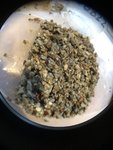Yes mind boggling diversity. In some ways, the difficulties of really understanding function of each component in a mix, probably lead to the almost cult like status of Akadama and Kanuma. Sometimes it is easier to just import what the Japanese use, than try to create an equally effective locally sourced mix design for bonsai. The extra expense of importing from Japan what is to them their local 'dirt', is just the cost of doing business for those that do not want to tackle the science of soils.
You can dispute, the soils the Japanese use work well for the Japanese. We in North America just need to figure out what works here.
Read
@Smoke older posts on potting media and soils. In the archives there is lots of good information.
In the mean time, in the USA, shipping pumice from the west coast to the east coast is still cheaper and less problematic than importing Akadama and Kanuma from Japan.
Growstone GS-2 Soil Aerator - is a man made product from recycled glass, under a different label sold as a light weight aggregate for concrete used in bridges and other weight sensitive structures. It is glass that has been remelted and caused to foam to entrain air bubbles. It used to be carried by Home Depot. Don't know if it is still available.
Perlite is a good pumice substitute.
Regardless, choose your potting media to compliment the water chemistry of your water supply, and your preferred fertilizer program. If you use soybean meal based cake type fertilizers, then an all inorganic substrate will work better for you. If you use liquid chemical fertilizer, then you should include an organic component like fir bark.
Also, climate plays a big factor in potting media choice. In the desert southwest one would make sure there is significant soil moisture holding components. In the Pacific Northwest - temperate rainforest region, water holding capacity would need to be significantly less. In the North Central and Northeastern North America - freeze thaw cycling is a factor, media that fractures into fine sand after repeated freezing and thawing (soft grades of Akadama for example) these need to be avoided.
So you can see how this all gets complicated.
Start with a piece a paper, make notes about your specific climate, water chemistry, prefered fertilizer, and from this figure out what traits your potting media needs to be. Then go through components available in your area and see what can work.













